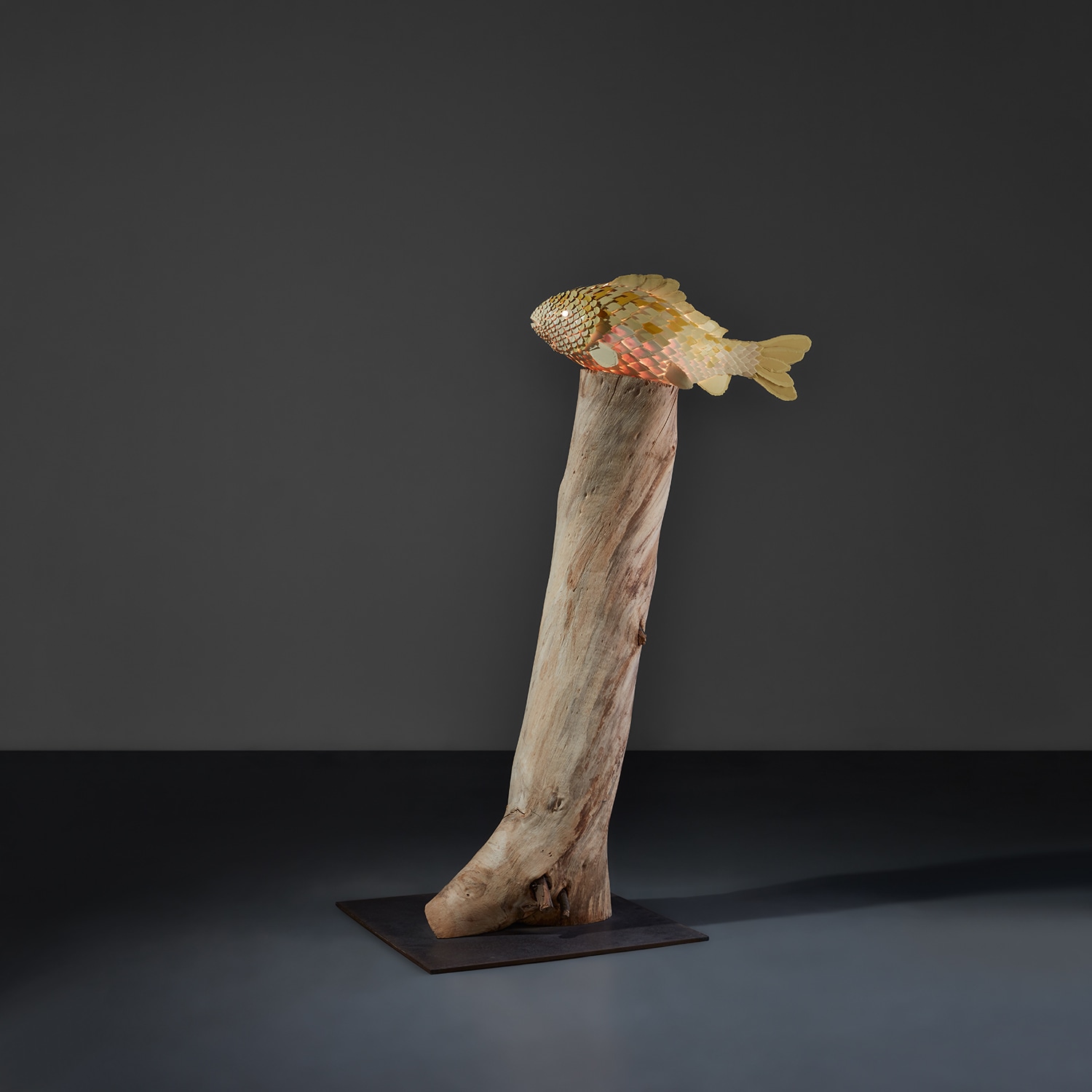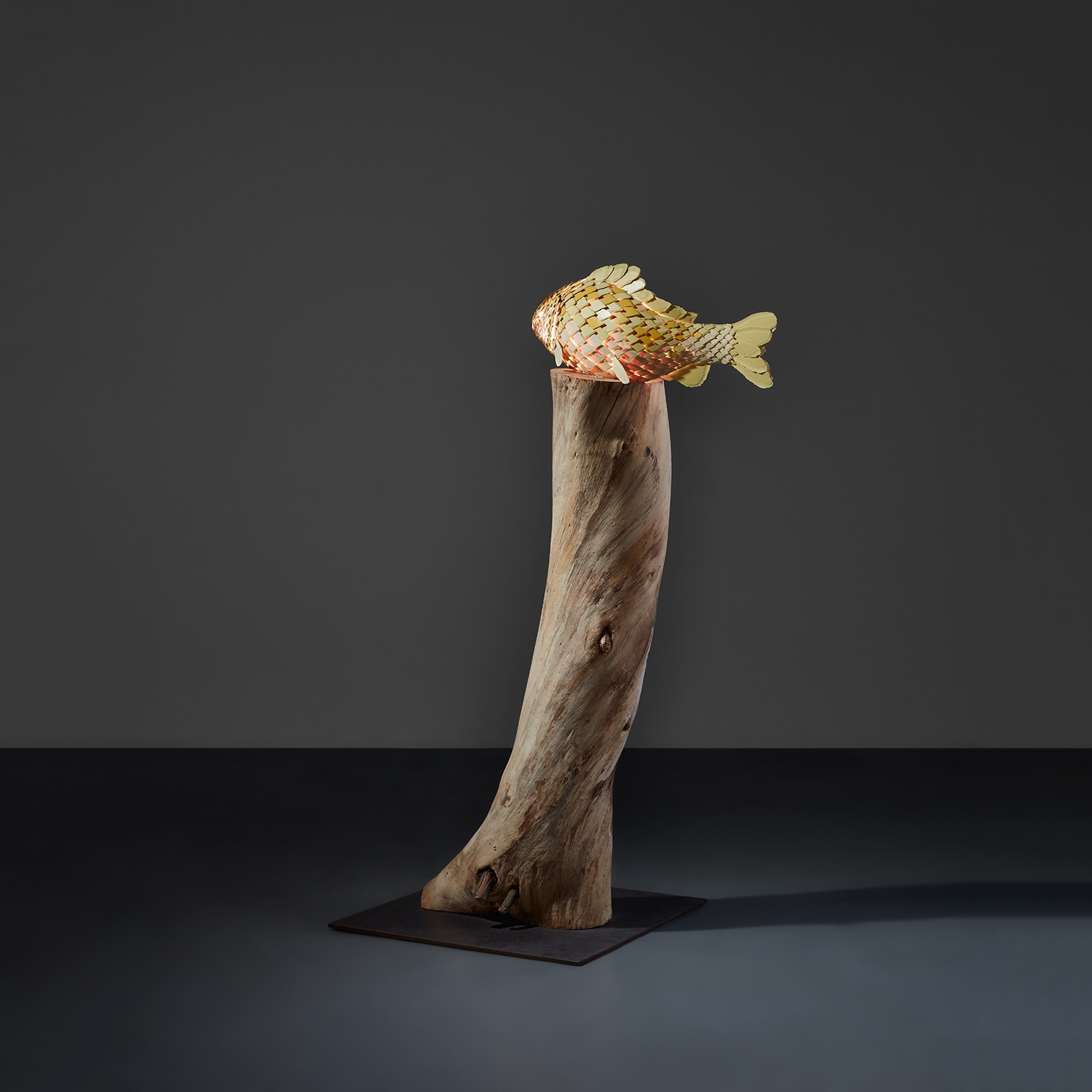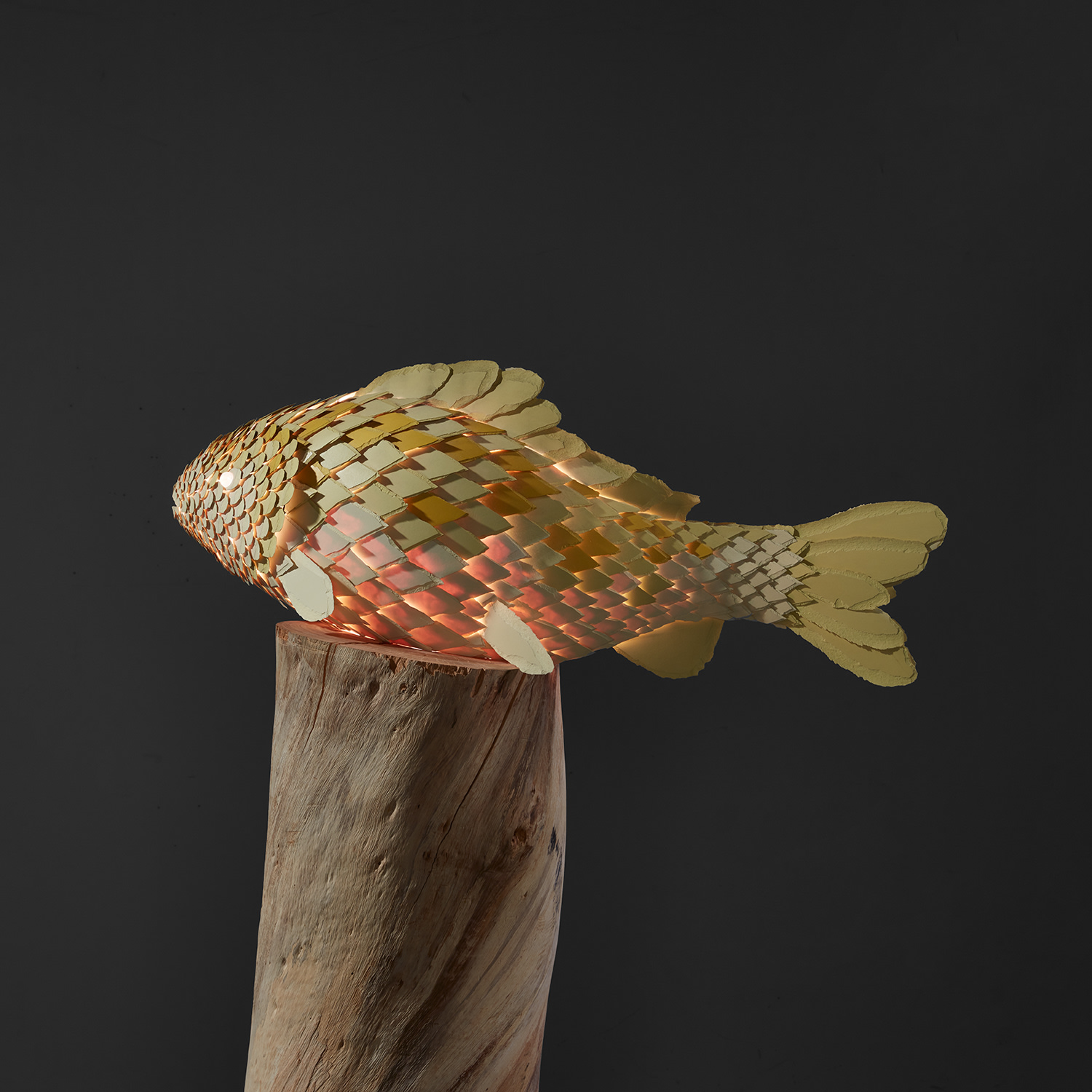





191
Frank Gehry
Fish Lamp
formica, glass, wood, steel and electrical lighting, in 2 parts
fish 11 x 28 x 9 in. (27.9 x 71.1 x 22.9 cm)
base 54 1/2 x 19 x 12 in. (138.4 x 48.3 x 30.5 cm)
base 54 1/2 x 19 x 12 in. (138.4 x 48.3 x 30.5 cm)
Executed in 1984.